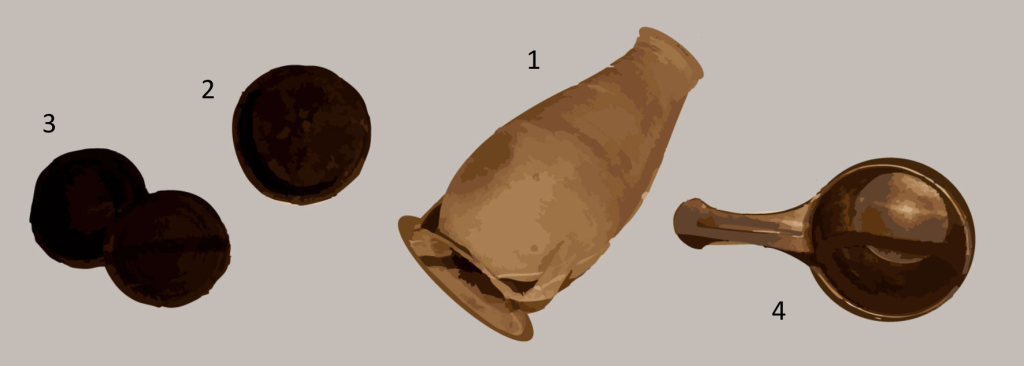At the center of the display case is a type of terracotta container (1 – urceus) found on the sales counter of Shop 11 in the Insula Orientalis II of Herculaneum.
Widely used in the Vesuvian area, this vessel originally had a lid and was intended for storing sauces or fruit. Inside this urceus, seeds of various legume species were found. The main group consists of seeds of common vetch (Vicia sativa) and bitter vetch (Vicia ervilia), mixed with lentils (Lens culinaris) and peas (Pisum sativum).
Vetch and bitter vetch are less commonly found in the archaeological record of the Vesuvian area compared to more frequently attested legumes such as broad beans and lentils.
The baskets (2) and wicker hampers (3)—made with twisted and sewn cords—were used for transporting and storing fruit and foodstuffs, as evidenced by numerous frescoes found in Herculaneum and Pompeii.
On the right is displayed a bronze pan balance (4) from the House of the Two Atria, a precision instrument used for accurate weighing. The finely crafted handle bears engraved weight values on both sides of an elongated slot, through which a hook with a chain and a weight would slide.

